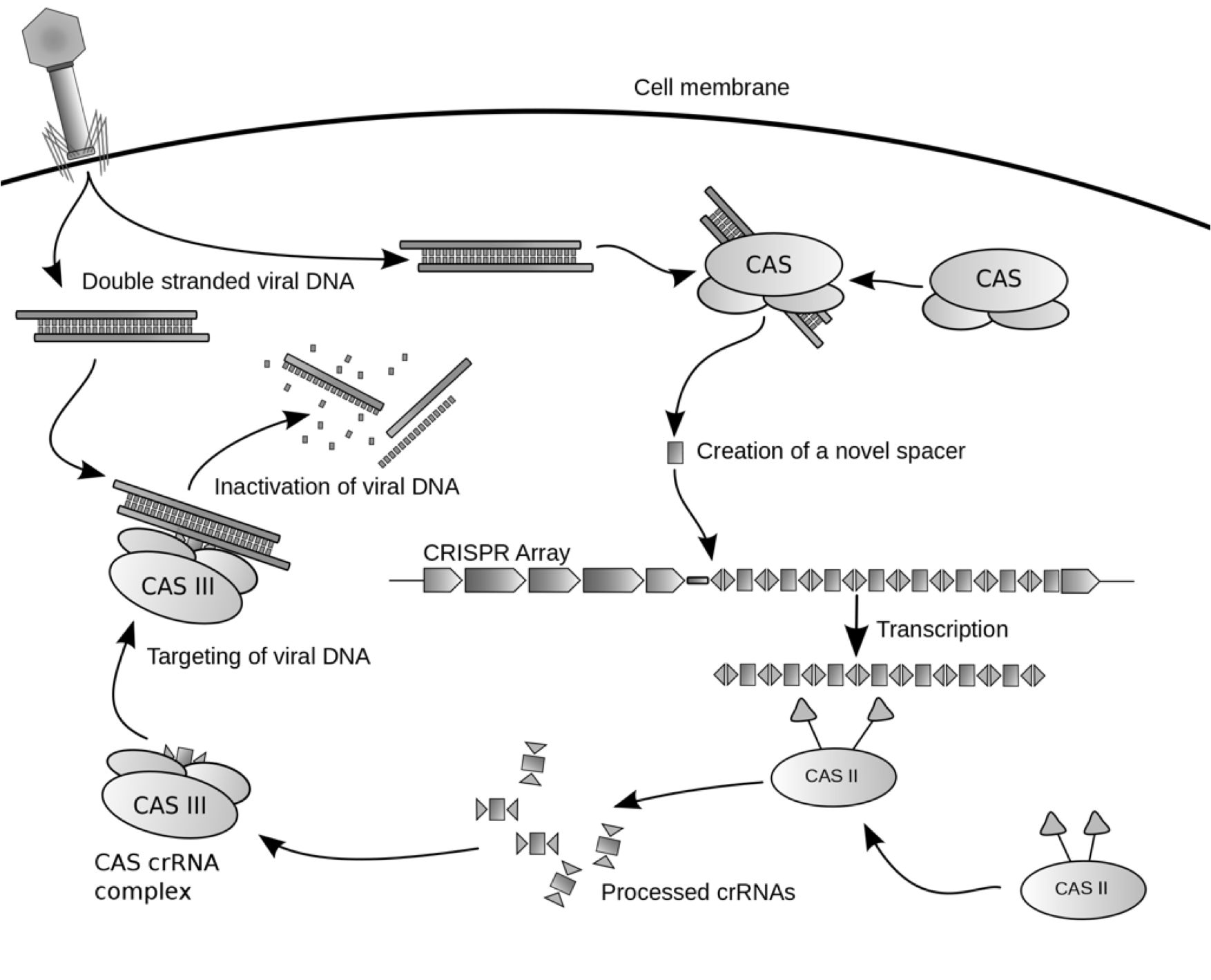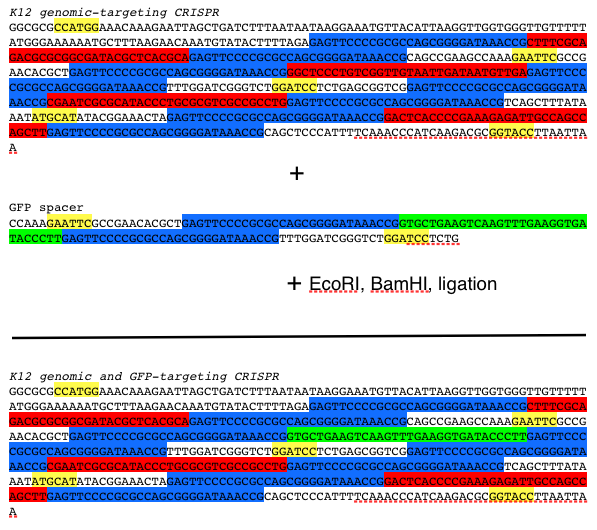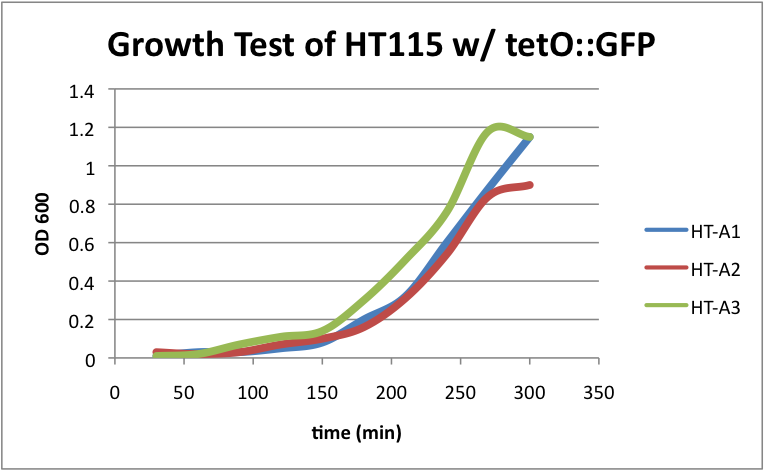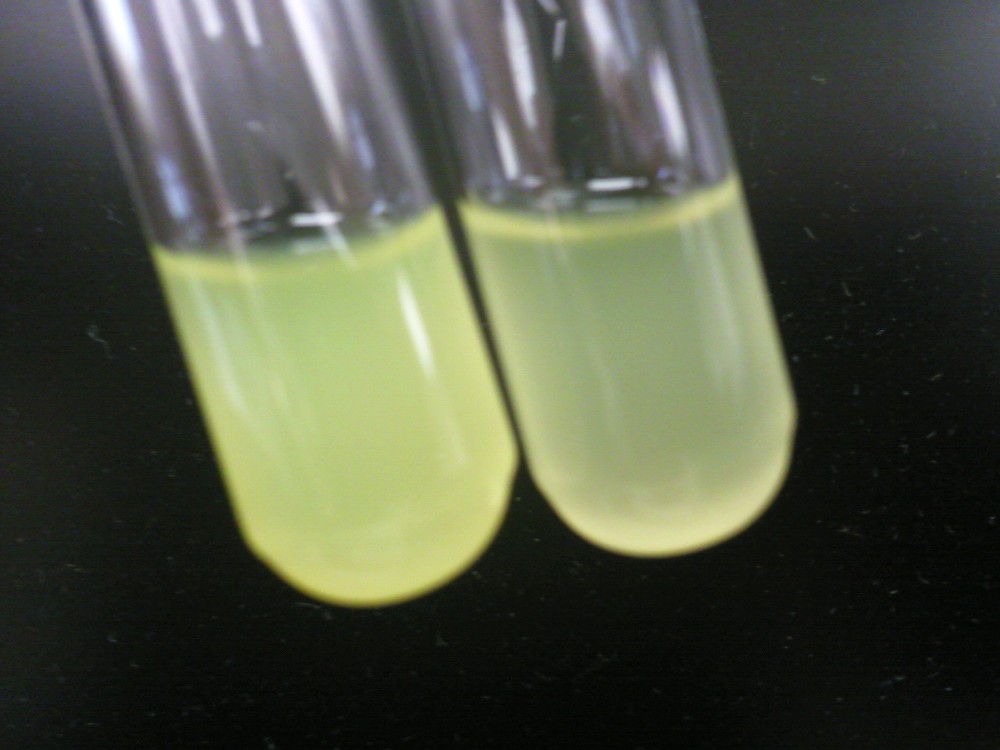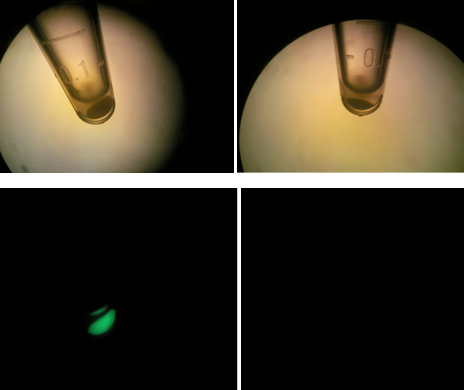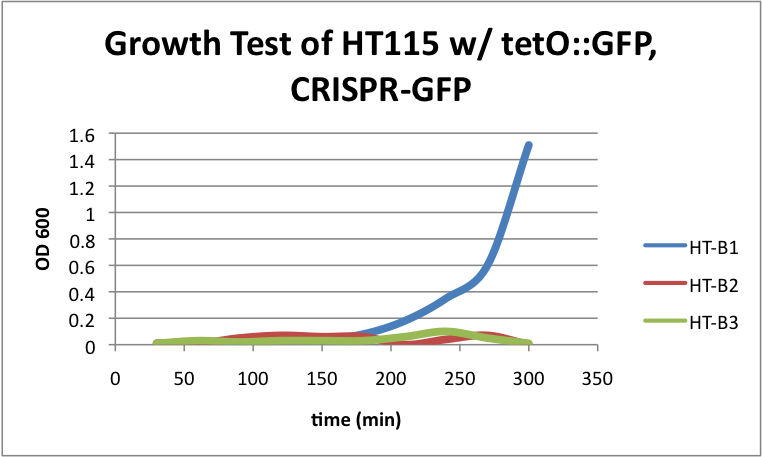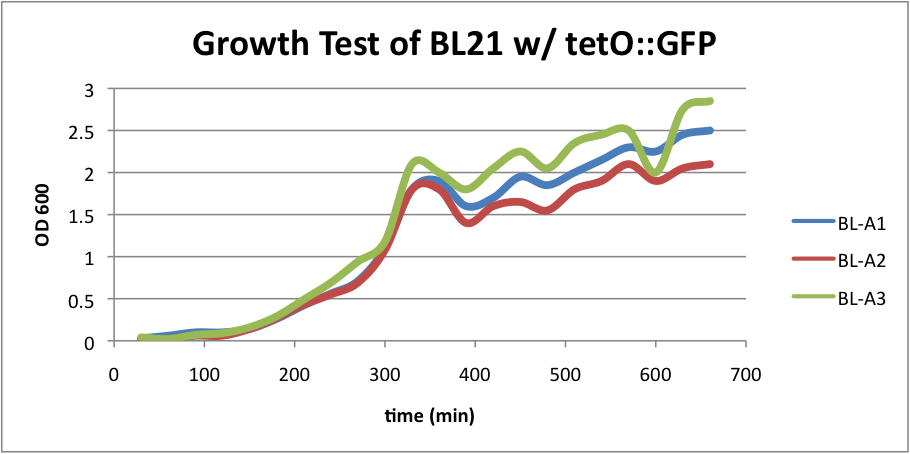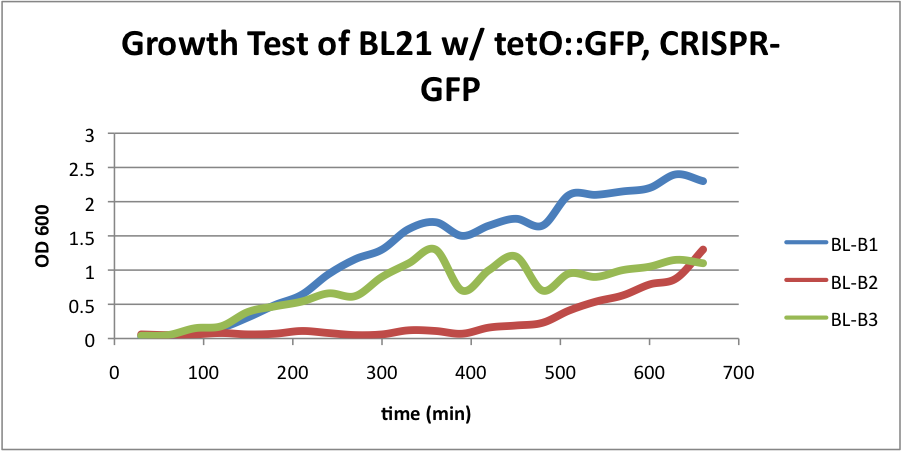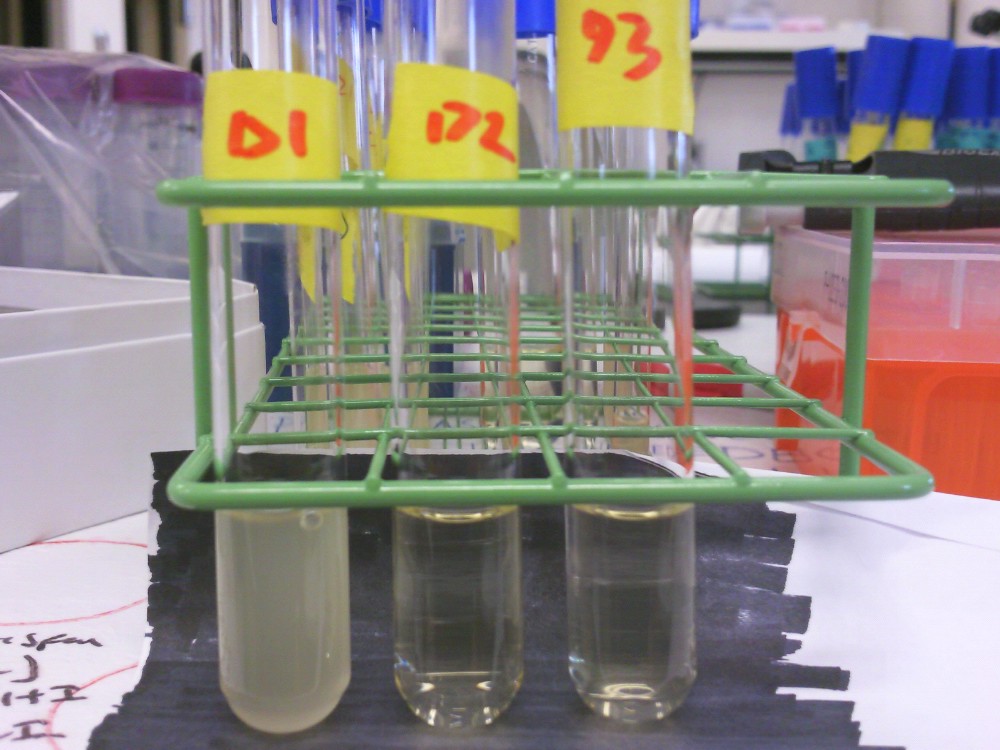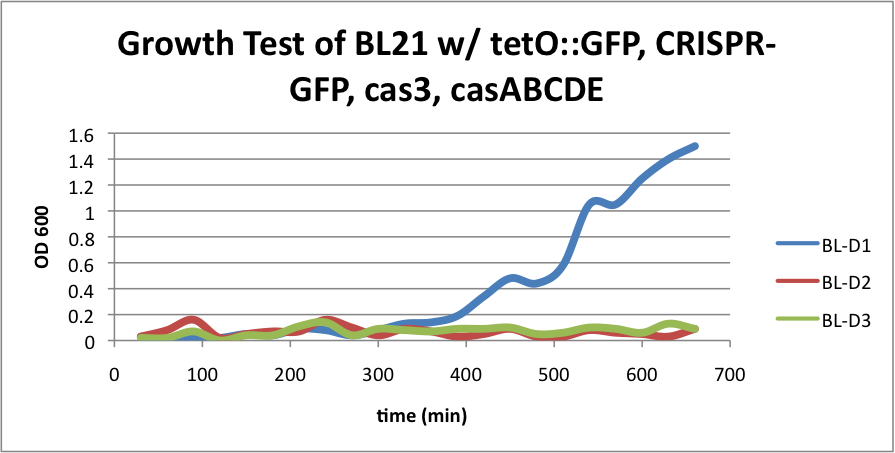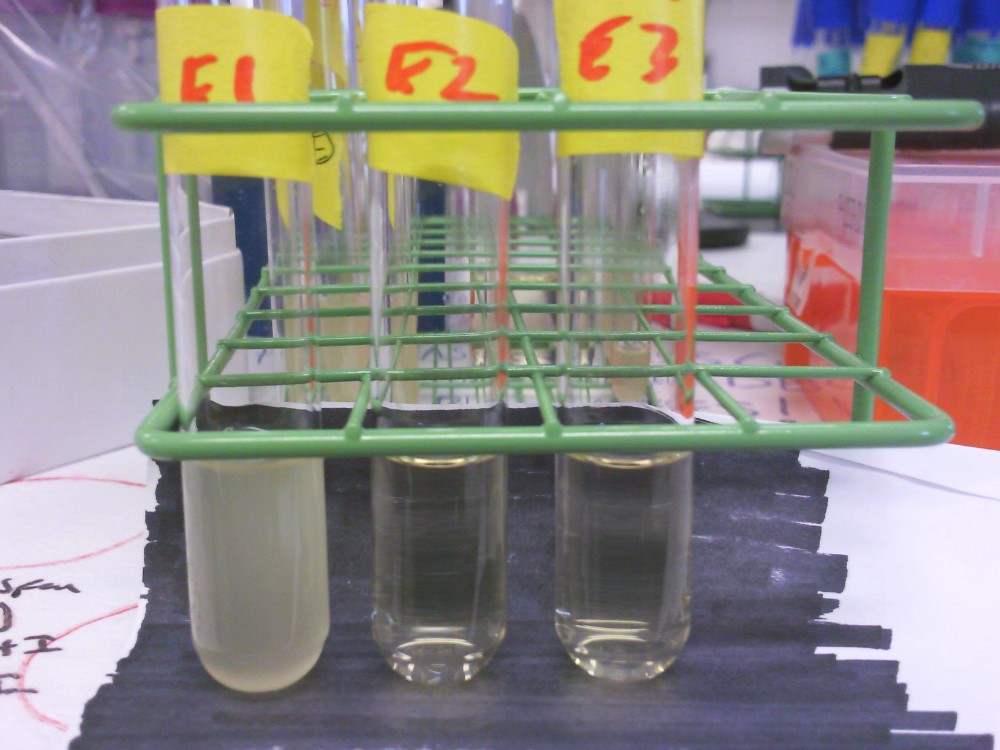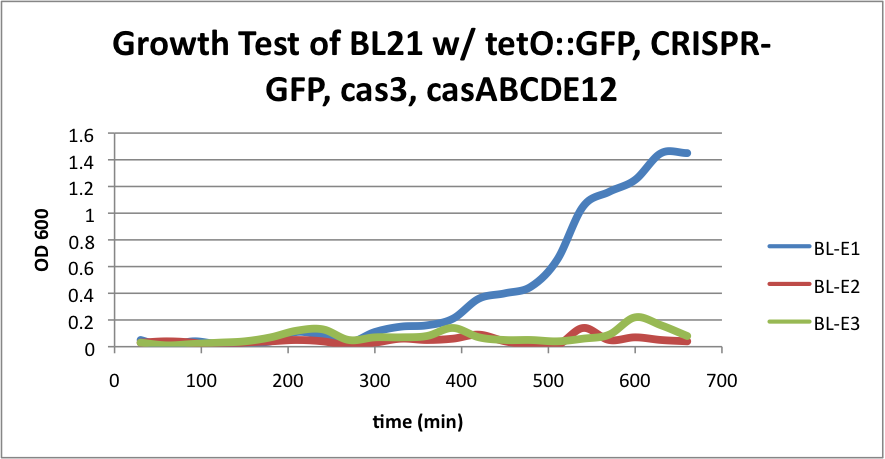Team:USC/Project
From 2011.igem.org
(Difference between revisions)
| Line 45: | Line 45: | ||
Studies have shown that ''Escherichia coli'' bacteria have a system that provides immunity against viral infections and plasmid conjugation in the natural world. This recently discovered system, also known as the CRISPR/Cas system, is made of eight cas (CRISPR-associated) genes and an array of repeats and spacers known as CRISPR (Clustered Regularly Interspaced Short Palindromic Repeats). The repeats are repeating DNA sequences of approximately thirty nucleotides that are separated by unique genetic elements, spacers. The sequences of these spacers are generally derived from foreign virus DNA or plasmids. The CRISPR array expands when the bacteria collects a new spacer in a process known as CRISPR adaptation. The bacteria only confers resistance to the virus or plasmid when its CRISPR repertoire contains a spacer that matches the DNA sequence of the invading DNA. Although parts of the pathway for CRISPR adaptation | Studies have shown that ''Escherichia coli'' bacteria have a system that provides immunity against viral infections and plasmid conjugation in the natural world. This recently discovered system, also known as the CRISPR/Cas system, is made of eight cas (CRISPR-associated) genes and an array of repeats and spacers known as CRISPR (Clustered Regularly Interspaced Short Palindromic Repeats). The repeats are repeating DNA sequences of approximately thirty nucleotides that are separated by unique genetic elements, spacers. The sequences of these spacers are generally derived from foreign virus DNA or plasmids. The CRISPR array expands when the bacteria collects a new spacer in a process known as CRISPR adaptation. The bacteria only confers resistance to the virus or plasmid when its CRISPR repertoire contains a spacer that matches the DNA sequence of the invading DNA. Although parts of the pathway for CRISPR adaptation | ||
| - | [[File:CRISPRworks.png| | + | [[File:CRISPRworks.png|300px|thumb|right|alt=Alt text|Possible mechanism of CRISPR/cas system against viral DNA]] |
[[File:CRISPRlocus.png|600px|thumb|center]] | [[File:CRISPRlocus.png|600px|thumb|center]] | ||
[[File:CRISPRschematic.png|600px|thumb|center]] | [[File:CRISPRschematic.png|600px|thumb|center]] | ||
 "
"

